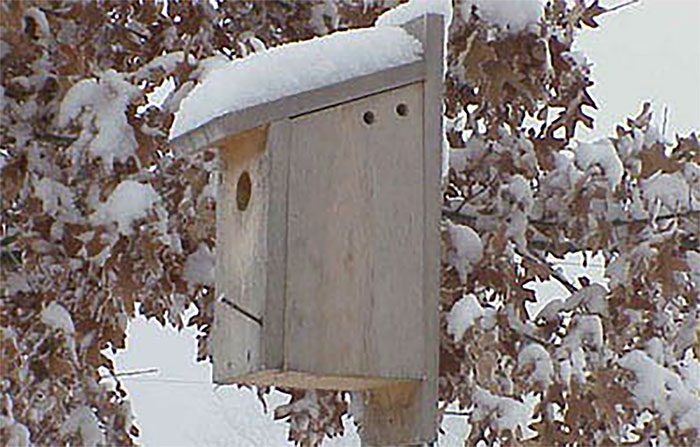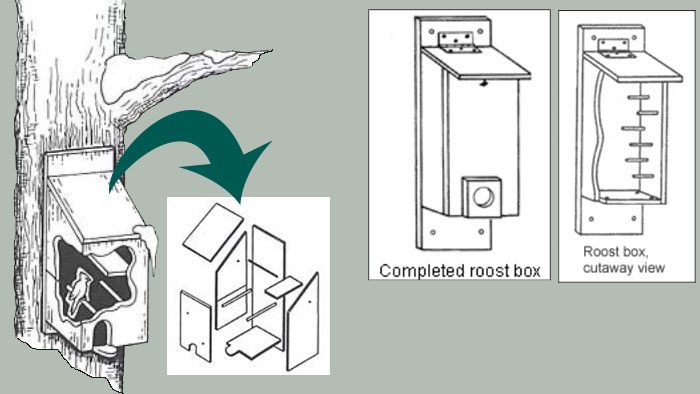Will birds use nest boxes to roost in for warmth during the winter?

Some birds use nest boxes as roost sites after the breeding season is over. Nest boxes offer shelter from rain, snow, wind, and cold—although a couple of aspects are not ideal for overnight roosting. They can be too small for groups of roosting birds, and their smooth sides and open interiors don’t offer much in the way of perches.
So your nest boxes might see double duty as roost sites during winter. But if you’d like to go one step further, you could provide a specially designed roost box. Any backyard favorites that typically nest in boxes—bluebirds, chickadees, titmice, nuthatches, and small woodpeckers—may seek refuge in it. Sometimes more than a dozen birds will pile into a single box to conserve heat.
Roosting boxes differ from nest boxes in several ways. A good roost box is designed to prevent the birds’ body heat from escaping, so, unlike a nest box, it has fewer ventilation holes. Also, its entrance hole is near the bottom of the box so the rising warmth doesn’t escape.

Inside a roost box there may be several perches made from small wooden dowels, staggered at different levels. The inside front and rear walls may be roughened, scored, or covered with hardware cloth so that woodpeckers can cling to them. A hinged top allows easy access so you can clean the box.
Some people modify their empty nest boxes for winter to make them better for roosting. Techniques include turning the front panel around so that the entrance hole is at the bottom, adding twigs for perches, and plugging some of the ventilation holes.
Find out more about roost boxes on All About Birds: Attract Birds With Roost Boxes. And check out these links for roost box plans:

All About Birds
is a free resource
Available for everyone,
funded by donors like you
American Kestrel by Blair Dudeck / Macaulay Library
